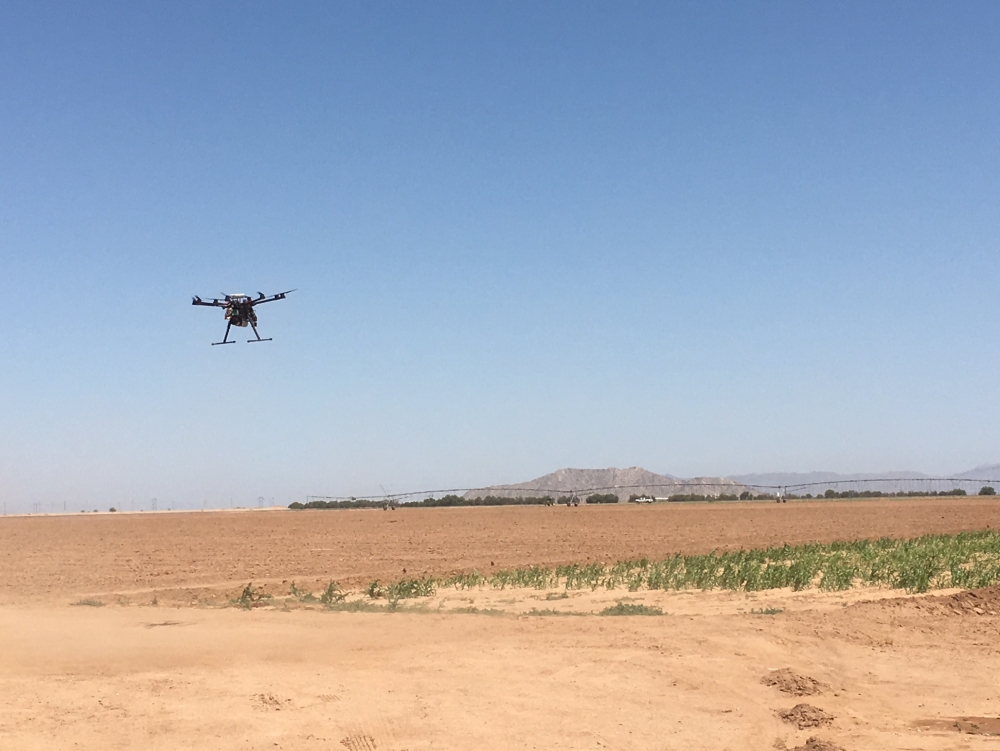
Biofuels have huge potential as a low-carbon alternative to fossil fuels for transportation. But farming crops for biofuel takes land, fresh water and other resources that are increasingly scarce as the world’s population rises -- so finding ways to grow them faster and more efficiently is key.
That’s where the Department of Energy comes in.
The Department’s Advanced Research Projects Agency-Energy (ARPA-E) brings together experts on plant genetics, information technology and robotics in the search for bioenergy crops that are sustainable, affordable and yield abundant feedstocks for biofuel. Through ARPA-E’s TERRA program -- short for “Transportation Energy Resources from Renewable Agriculture” -- some of these researchers are building robots armed with cutting-edge sensors to collect data on plant characteristics. Meanwhile, other teams develop tools that use this data to predict which plants will grow more quickly, thrive in stressful environments, and generally show greater potential to fuel and feed our planet.
Previously, evaluating fields of crops was done with two simple tools: the human eye and a yardstick. It was slow and imprecise. TERRA’s robotics technologies could soon make this kind of research faster, better and cheaper. Last week, ARPA-E hosted a TERRA field day at the University of Arizona’s Maricopa Agricultural Center in Arizona, inviting more than 100 scientists, energy and agriculture experts, policy makers and journalists to brave the heat and watch TERRA’s robotics platforms in action.
They saw live demonstrations of TERRA’s massive, state-of-the-art “field Scanalyzer,” a smaller, ground-based robot, and an unmanned aircraft system. Each of these robots can scan a field of “energy sorghum” -- a crop grown for energy production -- and gather data that will be used to develop predictive models for plant growth and development. That information could give farmers valuable insight into which plants are more resilient in the Arizona desert -- which, in turn, could have a transformational impact on the future of global energy and food security.
Meet the three robots that could shape the future of agro-energy:
Field Scanalyzer
A central part of the TERRA program is its “field Scanalyzer” -- the largest sensory robot in the world -- installed at the Maricopa Agricultural Center in Maricopa, Arizona. The unique sensing system moves along a gantry, scanning sorghum crops in an area the size of a football field. The system’s advanced sensor pack measures the growth and development of energy sorghum with unprecedented resolution, speed and accuracy.
Aerial Sensing System

It’s a bird, it’s a plane… it’s a super sophisticated aerial sensing system! The ARPA-E team from Blue River Technology flies its unmanned aircraft system (UAS) over a field of sorghum. The UAS can survey a field of crops, sensing for various plant and environmental characteristics from up in the air. By using a UAS, the team can quickly assess a field without interfering with the plants.
TERRA MEPP
The TERRA Field Day also showcased small land- and air-based robots that can similarly scan a field of sorghum and identify the most resilient plants. Above, the University of Illinois, Urbana-Champaign TERRA team maneuvers its Mobile Energy-crop Phenotyping Platform (MEPP) robot amongst rows of sorghum, assessing various plant characteristics, such as growth rate, photosynthesis and biomass.
See more images of TERRA robots and other technologies here.


